1968 Iso Rivolta GT (340)
Patination state. A ‘weathered’ 1960s Italian hybrid GT might not be most people’s choice as an everyday family classic, but engineer Peter Fareham is not most people.
Words James Elliott
Photography Oliver Brookwell
Patination state
ISO RIVOLTA GT Preserving a Giugiaro-styled rarity
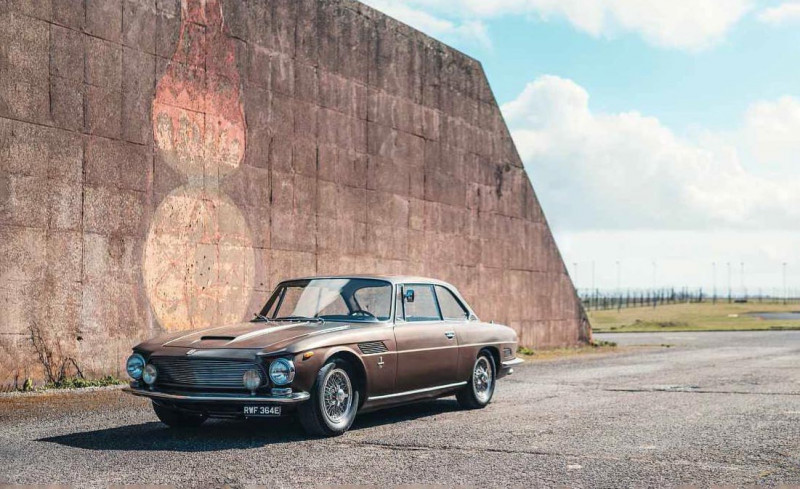
Terminology is important. For example, the term rat-rod’ always makes me wince a little. It conjures images of someone spending a great deal of money on making a car mechanically awesome, but then consciously giving it a weathered sheen of deceit, probably created by someone in a railway arch wielding an oxy torch and wearing nothing more than a maniacal grin. Don’t get me wrong, I actually rather like rat-rods; it’s just that, thanks to the recent inexorable rise of preservation, the wilful misrepresentation that the rat-rod name implies has become an unfair catch-all. That’s why I am so pleased that the phrase ‘patinated restoration’ has arisen. It’s far from my favourite word-combo, admittedly, but it does at least draw that vital distinction between the acts of painstakingly conserving a car or deliberately distressing one, even if it is to the same visual effect.
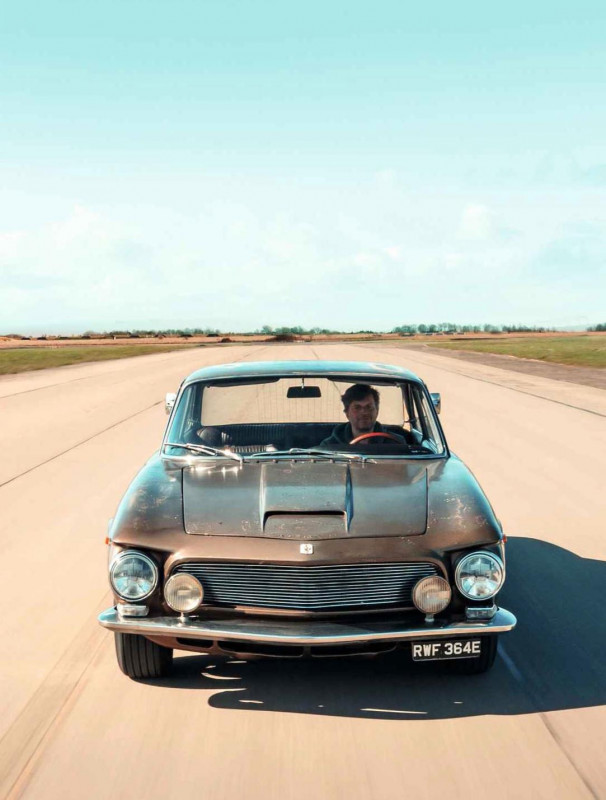
This car is very much in the former camp and is a prime example of why such a distinction is warranted. The rare Iso Rivolta GT is freshly back on the road, mechanically pristine and about to embark on a new life in the UK, yet still proudly wears all the scars of its former lives.
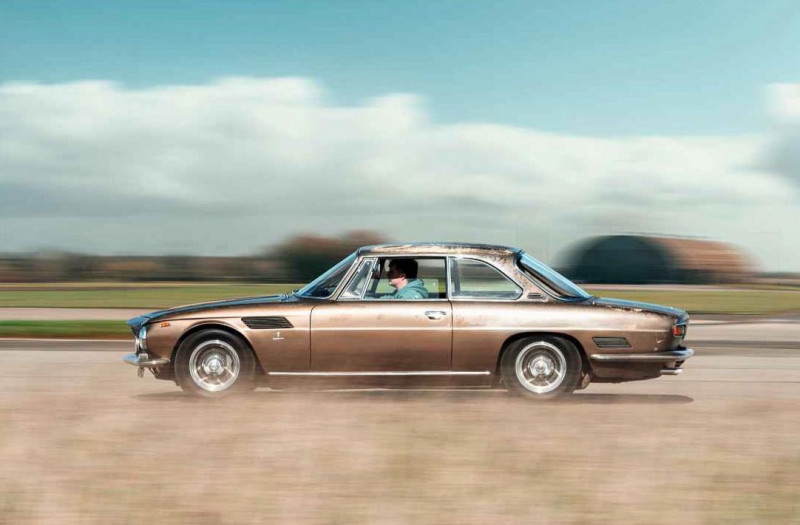
Iso is your typical fridges to riches story. Renzo Rivolta bought Isothermos — a specialist in helping you make things hot or keep them cool — in 1939 and, almost immediately post-war, decided to branch out His company graduated from white goods to two-wheeled transport via microcars and on to supercars before Renzo died suddenly aged 66, the company passing to son Piero and lasting another decade before its terminal demise.
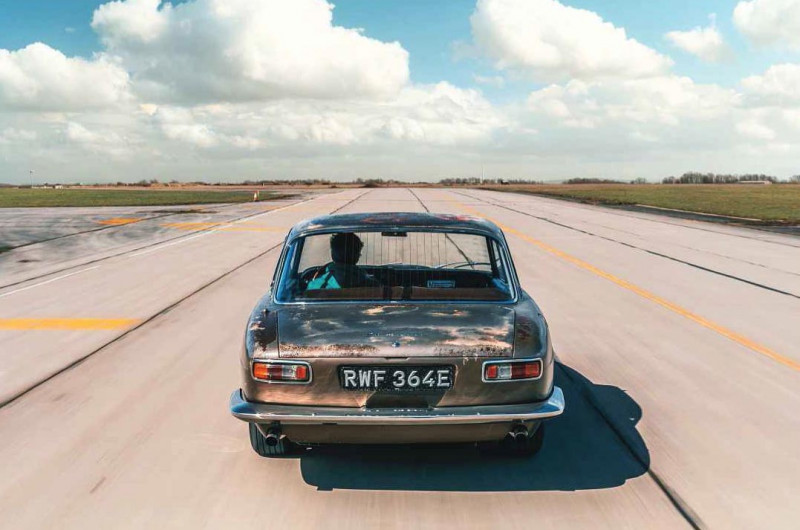
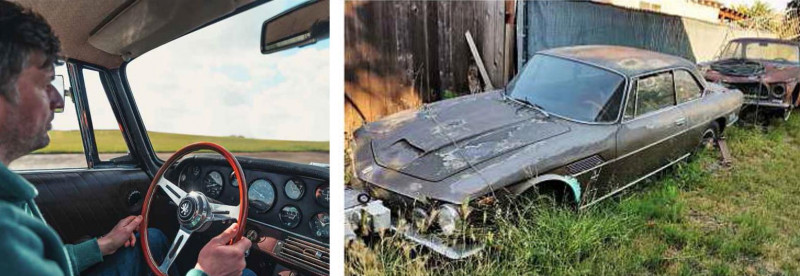
Two stand-out successes helped to put the Bresso, Milan, company on the map: first the Isomoto scooter, a credible rival to Lambretta and Vespa, and then the Isetta bubble car, after it was licensed to BMW. His next step — a full-four-seater luxury GT — was bold to say the least, but success was coming easy, so why not?
The Iso Rivolta GT300 was born in 1962, styled by Giorgetto Giugiaro (then at Bertone), largely designed by Giotto Bizzarrini and using bombproof Chevrolet small-block engine and drivetrain. So far, so Gordon- Keeble. Why raise that? Well, the British car may not have gone on sale until 1964, but the projects inception was in the death throes of the previous decade and there were pre-Rivolta discussions over whether Iso might build the Eastleigh flyer. GK lore has a chassis being sent to Iso and coming back covered in chalkmarks. Apocryphal? Almost certainly not, but the insinuation that the Italian car was a rip-off of the Brit is wide of the mark. If anything, Renzo and his team learned as much about what they didn’t want from the Gordon-Keeble as what they did.

So it was that the Iso Rivolta GT300 appeared at Turin in 1962. It was a front-engined, rear-wheel-drive GT, powered by a 5359cc Chevy ‘327’ V8 through a three- speed auto or four- or five-speed manual gearbox. Weighing in at just over 1.5 tonnes, it had a platform chassis (rather than the GK’s tubular frame) clothed in a steel body (unlike GK’s glassfibre), with unequal-length wishbone front suspension and de Dion rear axle (located by a Watt’s linkage and boasting a Salisbury Powr-Lok LSD), plus servo-assisted Dunlop discs all around, inboard at the rear. Performance was brisk for the era, with a 15.9sec standing and a terminal speed of 91mph. 60mph came up in a fraction under 8sec in the 340 variant and there was a top speed of over 140mph (precise numbers are vulgar in GT world), easily comparable to the age’s most notorious wild-child GT, the Jensen C-V8.
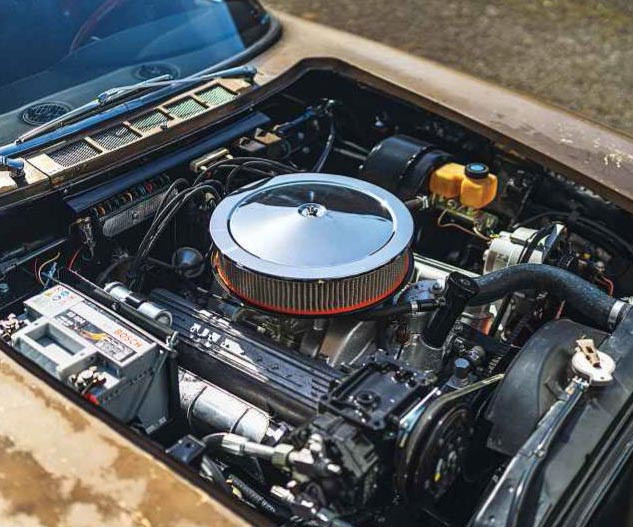
The reception was positive, but conquering GT world proved more difficult than Renzo anticipated and his first full-sized car sold 797 units up to 1970, including 167 hi- po 340s that came on stream from 1964. Of all those cars built, it is surmised by the Iso Registry that about 400 survive and this one, chassis 713, is one of the more intriguing. It’s recently come to the end of an extensive restoration that has made everything you can’t see ‘as- new’ and everything you can ‘as-was’.
One of the last 340s, it was fitted new with Grifo gauges and a leather dash, a four-speed manual, 2.88 final drive (3.07 and 3.31 were also available) and air-con. It was registered in Italy to Ing Gearo in April 1968 and next cropped up in 1985 in Alabama, USA. Having landed Stateside it swiftly moved to California and was registered to Donald Collier. A 1988 licence tag was never fixed to the car, suggesting it was most likely laid-up that year.
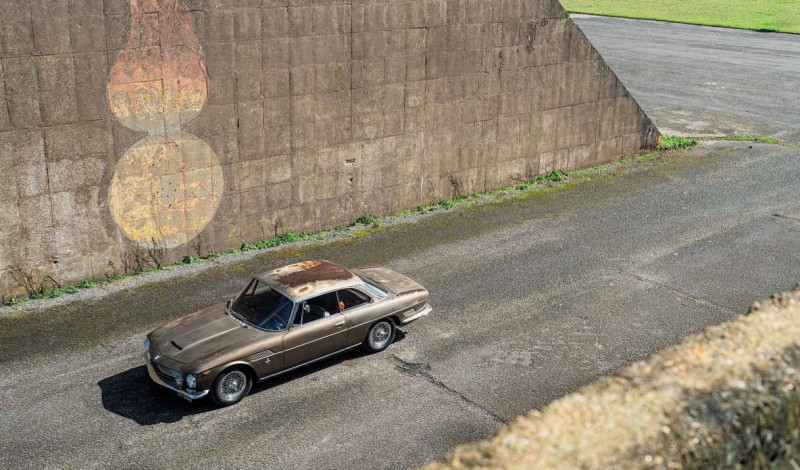
Then it languished for 30 years, until, towards the end of 2019, it was advertised for sale by dealer Ray Adams in the San Francisco Bay Area. The ad was picked up by a Brit looking for a classic family runabout, who bought it blind and shipped it. That Brit is Peter Fareham, a mechanical engineer with extensive aerospace experience who is now developing espresso machines and, with his wife, raising three young sons (nine, seven and two).
‘We have a lot o taut new drivetrain here and, via a close-ratio gearbox, it is turbine smooth to drive’
Peter’s first car was a 1955 oval-window VW Beetle when he was 15, and before he could even drive he was sourcing split-windows to order and doing all the shows. Then he got too good at it: ‘I bought a barn-find 1950 that I restored to a show car. It was so immaculate I couldn’t enjoy it, so I sold it in 1999 and bought an £8k Porsche 356. It wasn’t quite so shiny.’ A TR2 later joined it, but neither coped with the growing family. ‘I was never comfortable with them in the 356 on long hauls. I had belts fitted in the TR and they worked well with a child seat, but I could only ever take one. I just wanted a classic I could take the whole family anywhere in with no stress.’
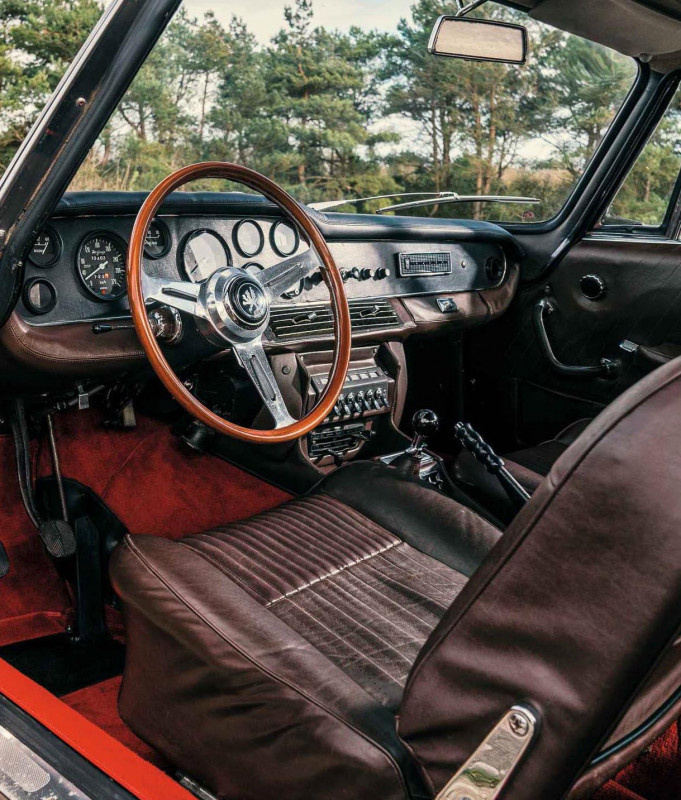
In 2019 he started hunting for a Jag Mkl on the US West Coast — ‘I wanted the sun-bleached look that occurs naturally only in California’ — when he stumbled across a pair of Iso Rivolta GTs recently liberated from a San Francisco backyard scrapyard. This was the good one.
Peter shipped it straight to Nick Hill and Steve Holmes, of Double H Restorations (doublehrestorations.co.uk) whose work on VWs and Porsches (especially Nick’s 912) and patina restorations Peter knew by repute. Having met on a restoration course, the pair have been in business for 15 years but had never worked on a car like the Iso Rivolta. Even so, all three agreed what had to be done. Peter says: ‘It was always the intention to keep it patinated.’ Steve adds: ‘It’s always nice doing to a customer’s car exactly what we would do if it were our own.’ Then Nick chips in: ‘That why we love patina restorations — no car and no customer is the same, it’s never monotonous.’
First step was to make the Iso solid enough to get it in the rotisserie, second was to wrap it in rubber to protect the precious original paint from tools, shotblasters and anything else that might damage it. Then they set about the rotten underside. ‘It was no surprise it was rusty,’ says Nick. ‘The windows had been left open all those years so it was not only sat on grass but then had the rain coming in from the top as well. The whole underside is as-new now.’ Where it was welded, new paint was colour-matched and blended-in, but where cracked or fragile paint was original a satin clearcoat was applied to seal and protect it.
Rust was not the most time-consuming issue in this restoration, however. Nick says: ‘With no panels available everything had to be fabricated, especially the sills, which were far more complicated than they looked. But about half the total restoration time was research and sourcing bits; some days I spent more time online than on the car. For example, the tie-rod ends are shared with a Hanomag tractor, yet the centre tie-rod is Lamborghini Espada.’
Luckily a very supportive Iso Facebook group came to the rescue with a parts interchangeability guide that became the team’s bible. Even then the rarity of the car (and its upmarket roots) meant that some parts were hideously expensive. ‘I’ve not got bottomless pockets,’ says Peter. ‘While I never said no to anything, at every stage we were looking for affordable ways of doing things.
‘The piece de resistance is the underbonnet insulation. I discovered that, when diamond stitched and with the tramline, the heat reflective material used for ironing board covers looks just about perfect.
‘Another big win was the replacement window switch. Repro ones are horrendously expensive, but I found a Maserati Ghibli one on eBay for a fraction of the price. It’s not perfect, but that just means it sits well in the car.’
Such details belie the work that has gone into this GT. Steve refreshed the engine, which was then painted orange (as it left the factory), then silver over the top, as it would have been in-period. A new stainless exhaust replaced a home-made variety pack of tubing, but with the original patinated tips retained, while the bespoke
and unusable wiring was a major challenge. And Peter reckons he spent 100-plus hours coaxing rock-hard leather back into life after its 30 years in the California sun. All that’s defeated them is the fuel sender, while the biggest change was inserting a five-speed Tremec TKX in place of a four-speed Muncie M21 (precursor to the M22 rock-crusher) to drive through that Jaguar/Salisbury dift. It makes sense for five-up Continental cruising.
The GT is a good-looking car, largely thanks to those extra driving lights that make the front look less gaping and Bristol-esque. It’s surprisingly petite given its internal capacity. In profile the prow is pointy, almost like a Maserati’s, and, having flowed from the same pen, there are hints of the Gordon-Keeble. Yet, thanks to those frowning eyebrows, the one car the Iso’s face most resembles is Sergio Sartorelli’s VW Type 34 Ghia. Everything else less so. Passing along the typical Giugiaro hat-friendly glasshouse (no high seats or headrests to spoil the horizon) past slim A-pillar, barely existent B- and slender C-, you reach a softly reverse-raked rear end tastefully echoing Ferrari 330 GTC, though the angle of the rear lights is fractionally at odds with the boot-line.
Its stance on refurbed Borranis is perfect, but that is not as period correct as it looks. Peter says: ‘We spent ages looking at old photos to work out what “normal” was, but couldn’t, so just did what looked right and lowered it slightly. We got a bit over-excited on the first attempt. The rears were too soft and the height was fine until you put any weight in the car — then it looked like a low-rider!’
My fave exterior detail is the exhaust back boxes turned on their sides and tucked up under the ’arches so they’re barely visible and don’t hang proud of the underside.
Inside, the IR340 is a sumptuous symphony of brown and the driver’s seat offers an excellent GT position for lengthy stints at the wheel without sapping your energy. Its luxury status is advertised by air-con and electric windows; it is very well-appointed with a broad dash, neat cadre of toggles and a nice range of Grifo (Veglia) dials, the speedo boasting of 320km/h potential. Centrestage goes to oil pressure.
Fire it up and you get exactly the aural glory you would expect from a small-block Chevy, as you do when you start playing that Tremec, working the billiard ball-topped stubby lever through the gears for fun. The clutch is period heavy, but we have a lot of taut, new drivetrain here and, with the close-ratio box ’both tight and offering short throws, it is turbine-smooth to drive. The ride is superb, the low-geared steering nicely responsive at speed and the balance on 6in rims perfect when you start to get aggressive through sweepers. Only a slightly docile throttle doesn’t gel with the immediacy of a sports car but, yes, you could happily load this up with your family plus luggage and set sail for the far reaches of Europe.
I love the Rivolta, not just to drive but to gaze at, parts- spotting — Mistral rear lights, common or garden Lucas 5SJ water bottle, Lancia Fulvia lens on the inner boot light. What has the reception been among aficionados? Peter says: ‘The Facebook group is a lovely bunch of people so no-one has trolled me about what I’ve done with the car. In fact, there’s a lot of positivity about the fact that it has been saved at all. We just wanted a nut-and- bolt-plus build, a bit more driveable, a bit more usable, a bit more reliable.’
Nut and bolt plus? I like it: excellent terminology.
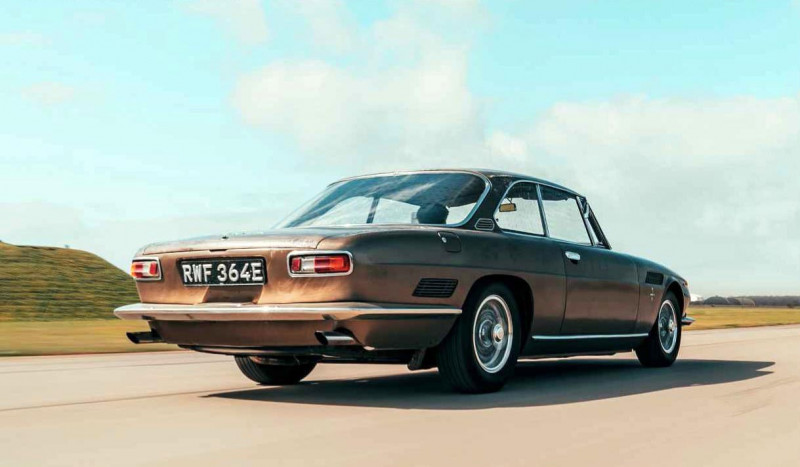
Above Lovely stance came at the second attempt, after initial overenthusiasm made it so low that it was a relief the silencers were tucked away under the rear wheelarches.
Clockwise, from above 327 has orange paint undercoat, as it should; GT is a flat-track bully; underside restored on the rotisserie; (l-r) Hill, Holmes and Fareham; it's a new car underneath.
Clockwise, from above Fareham gets to know his new wheels; Iso Rivoltas as found in a Bay Area backyard; great profile, but that rear vent lets brake heat out; aged in a way only a Cali car can.
Clockwise, from above Air-con and toggle switches galore are befitting of the Iso Rivolta’s luxe-GT status; roof is most obviously patinated element of bodywork; long, low, well-judged proportions.
TECHNICAL DATA 1968 Iso Rivolta GT (340)
- Engine 5359cc (327ci) OHVV8, Holley 3810 carburettor
- Max Power 365bhp @ 6200rpm
- Max Torque 360lb ft @ 3600rpm
- Transmission Five-speed manual Tremec TKX, rear-wheel drive
- Steering Burman recirculating ball
- Suspension Front: unequal-length wishbones, coil springs, telescopic dampers, anti-roll bar. Rear: de Dion axle, radial arms, Pan hard rod, hydraulic dampers Irakes
- Servo-assisted discs, inboard at rear
- Weight 1520kg
- Top speed 142mph
- 0-60mph 7.9sec
‘I found the Iso Rivolta really interesting. I'd never heard of one before and something about a V8-powered Italian muscle car is just cool. I really liked the lines of the body, and the lacquered, ageing paintwork really suits the car and tells a story.' Oliver s photography accompanies James Elliott s words on this article.


